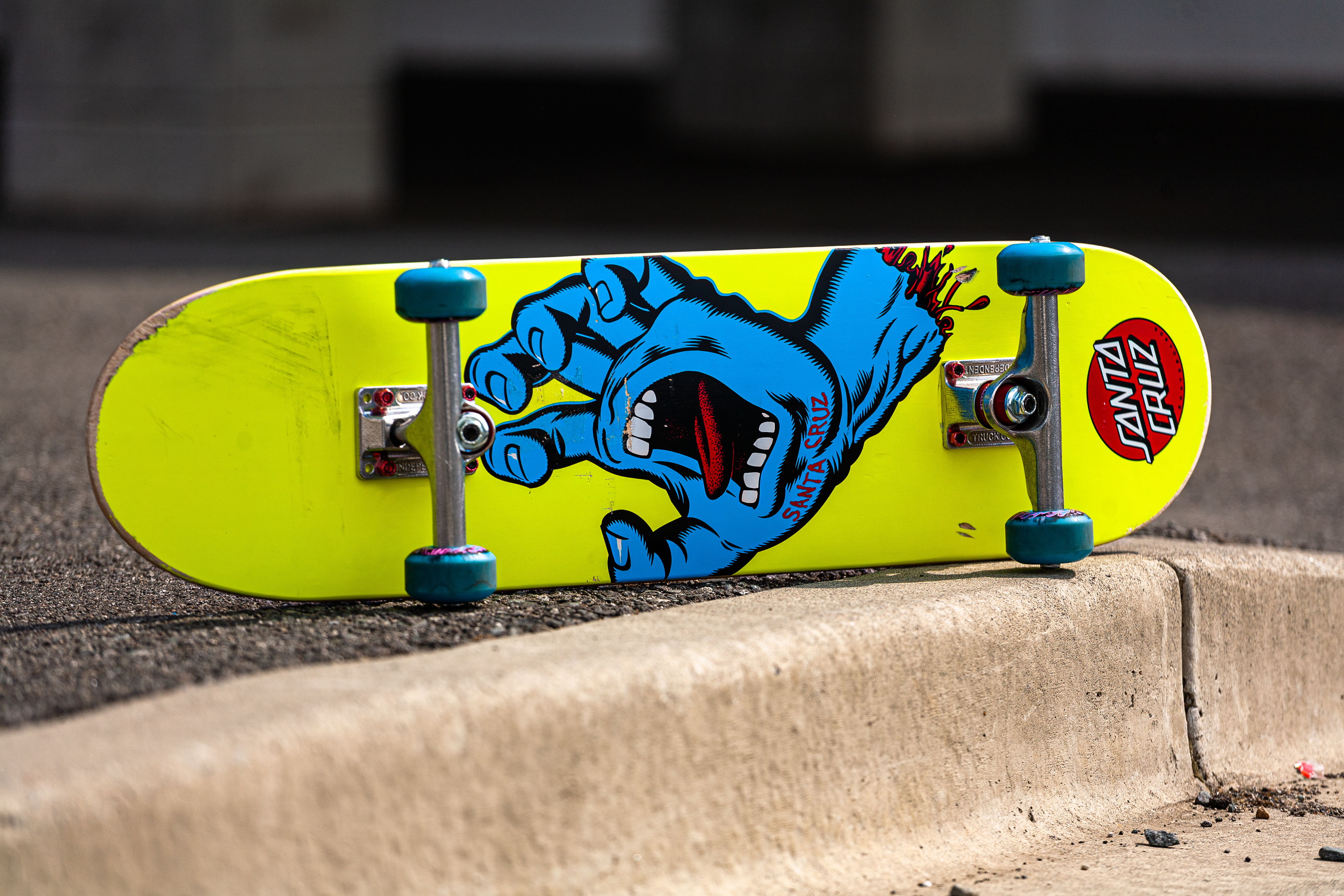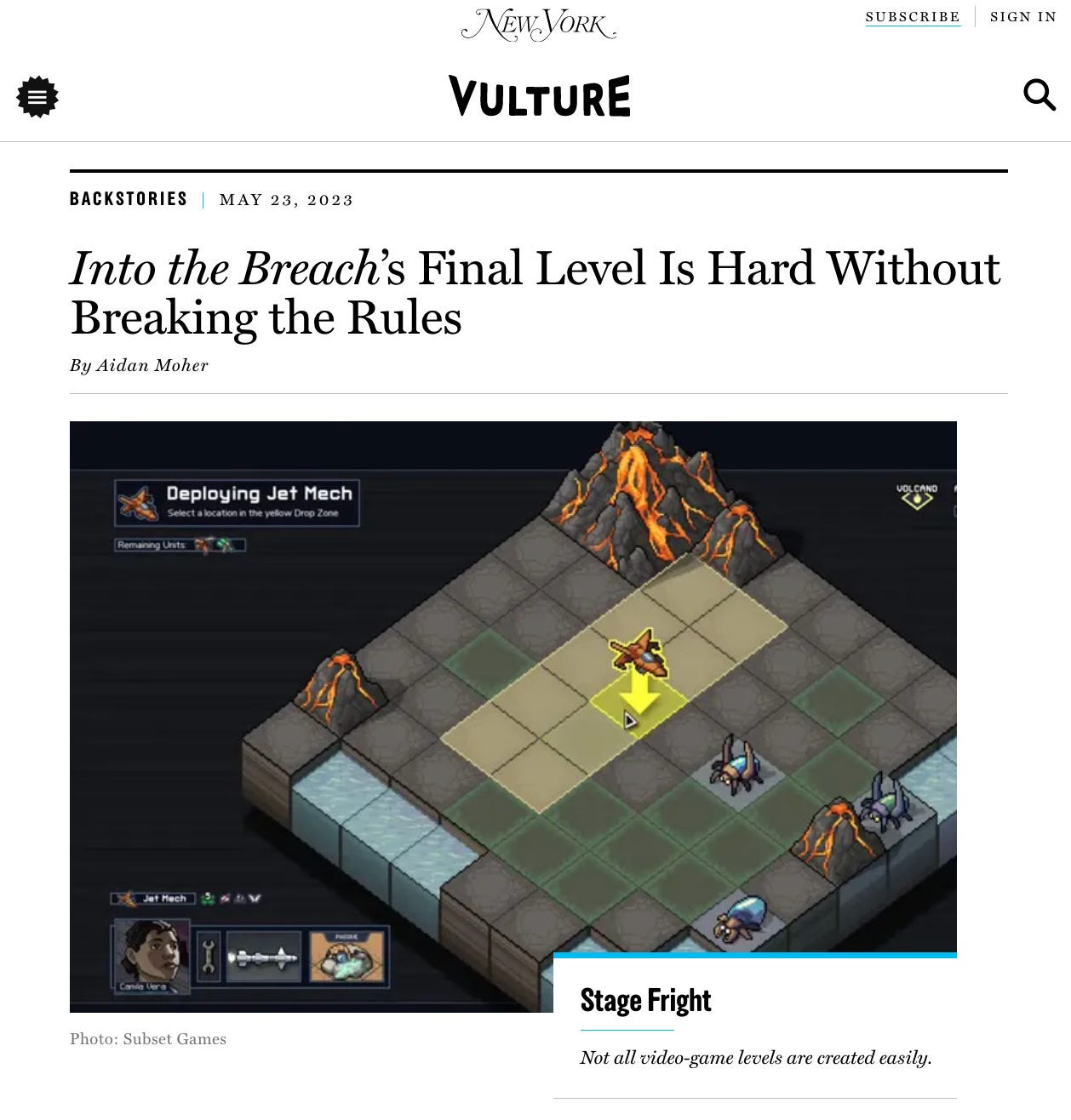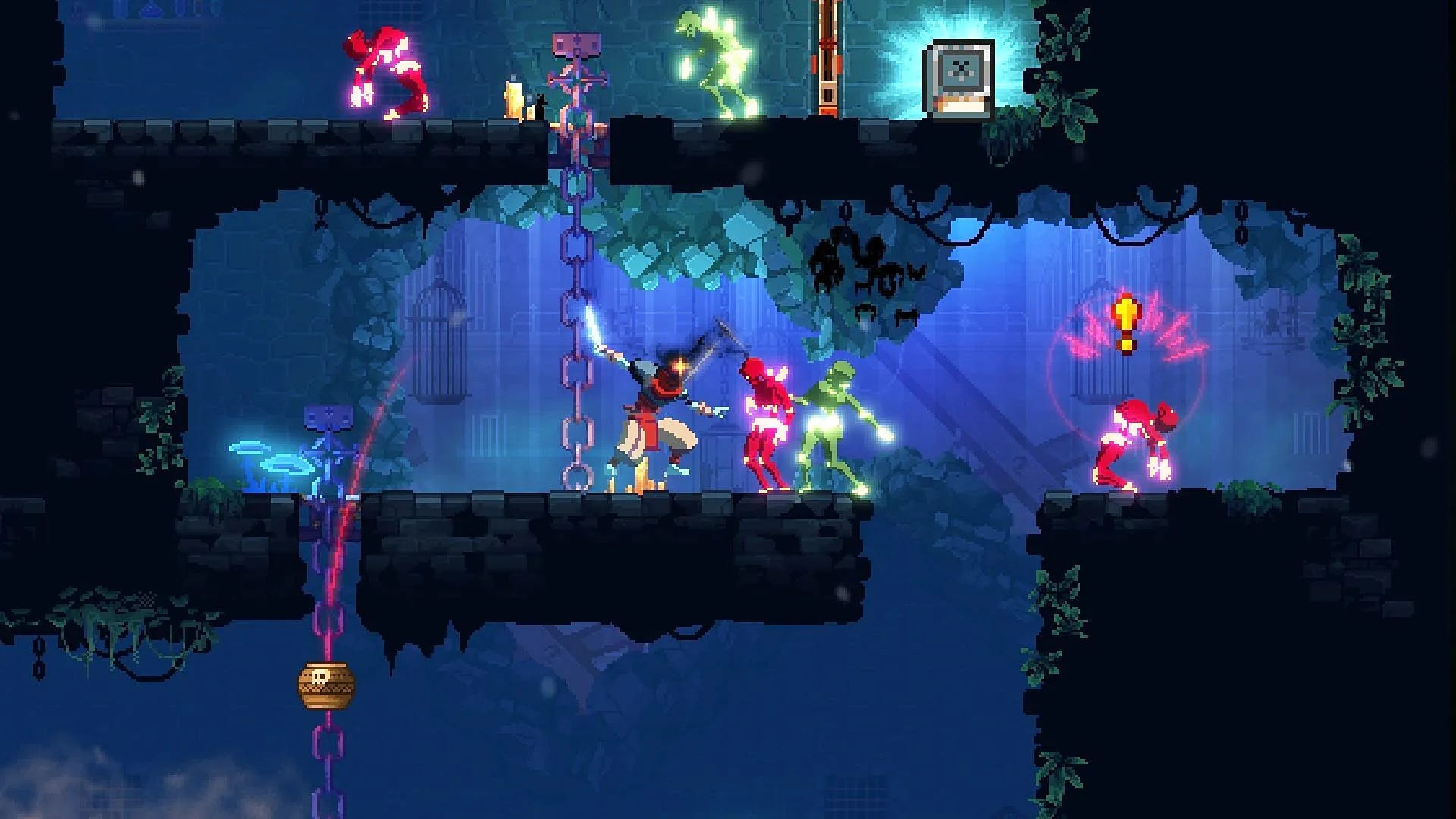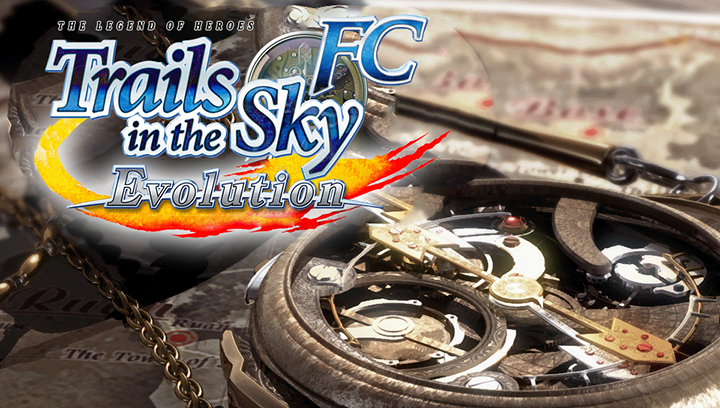Astrolabe 33: Everything New is Old Again
On skateboarding as a 39 year old, video games of the year, and evolution

How Do You Do, Fellow Kids?
So, I started skateboarding. Again. As a 39 year old.
And my wife won’t stop making fun of me.
I skateboarded a lot of in high school, when street skating culture was at an apex, and it provided a healthy, fun way for me and my friends to stay outside, motivated, and physically active. I was never great at it—too chickenshit to commit to landing tricks—but I had fun.
(Before you ask, I’ve got a helmet, a full set of pads, and a careful, conscientious understanding of what my body can take now. I had my first fall the other day, but thanks to my now-scuffed up wrist guards, the only thing I got was a sore butt cheek.)
Culturally, we’re told that the artifacts of our youth are roadblocks to success as adults. Play is for kids, and grownups do serious things. If we’re having fun, we’re not contributing the economy, we’re “wasting time,” unable to let go of the past. But play—real, genuine play—is essential for happiness and well-balanced emotional/mental health. A few weeks ago, I was at the skatepark with my kids and their scooters. While they zipped around, I aimlessly followed them around on foot, looking like a Total Dad®. They were having fun, but I wasn’t.
When I first stepped on my new board (which I bought for $100 from a kid saving up for a PS5, which is maybe working against the point I’m making here) in the parking lot of my daughter’s elementary school, I wibbled, wobbled, laughed, and wondered if I’d ever figure it out again. The next day I was cruising up and down a nearby footpath. A couple weeks later, I’m landing 1/2 of my ollies, dropping small curbs, and practising nose stalls. It’s not much, but it’s fun.
I was surprised by how much muscle memory kicked in, considering it had been 20 years since I’d last skated. I remembered the feeling of skating, but my body remembered the act. As I watched “What to do on your first day of skateboarding” videos on YouTube—many made by guys roughly my age, appealing to adults as much as kids—I realized I was far above an actual first time skater in terms of my body understanding the basic mechanics of just standing on a skateboard. We carry things with us for our whole life, never quite letting go of the things we love.
As a near 40 year old who writes about video games, I’ve seen this thought pattern about play being inappropriate for adults is even more hyper focused on specific things I love to do that many people my age or older associate with kids or teens. I love playing games, obviously, I’ve enjoyed my time relearning how to skateboard (even if I’m far more sore after an easy 30 minutes than I was as a 16 year old), Magic: The Gathering, and reading big, adventurous epic fantasy novels. These are all considered fundamentally unserious things by many people. They’re the things we’re supposed to leave behind in childhood as we pursue serious growth into becoming contributing members of society.
I have two jobs. I pay a mortgage. I cash cheques from the government that employs me to do skilled work as a web developer. I write books and have bylines with some of the biggest and longest-running North American publications out there. I contribute plenty to the adult world.
I recently saw someone (I wish I could remember who!) mention that parenthood is a developmental stage of life similar to adolescence. I smiled when I read this. I hadn’t thought of it before, but understood it deep in my core. Having kids changed me at a fundamental and emotional level. It made me take adulthood more seriously. Having kids also helped me understand and recognize the value of play and fun as virtues that help balance out the difficult things we do in life. Capitalism demands that we slough off everything but the essential efforts to line the pockets of the billionaire class — but that shirks the basic need for humans to break from effort, to restore our reserves of emotional, physical, and emotional energy.
Paraphrasing Emily St. John Mandel in Station Eleven (who herself lifted the line from Star Trek: Voyager): Survival is not enough.
We need to thrive.
And play is a vital part of thriving. Not commoditized play for social media content. Play without cameras. No tweets. No likes, shares, or virality.
Just play for its own sake. Play in the moment.
When I told a friend the other day that I got a skateboard, he cringed and said, “Ehhhhh, I don’t think I like skateboarding for adults.”
I laughed.
But, here’s the thing: Rodney Mullen, who you might remember from my other teenage obsession, Tony Hawk’s Pro Skater 2, is 56 years old. He basically invented modern skateboarding back in the 80s and can claim credit for many of the sport’s most iconic tricks: the kickflip, heelflip, and even the ollie. He’s still going hard.
Rodney Mullen, Elissa Steamer, Chad Muska (my boy), and many others helped popularize street skating in the 80s and 90s, when many Millennials—themselves parents and full-blown, economy-fuelling adults now—were coming of age and throwing themselves head first into the activities they loved. The 80s and 90s saw the popularization and mainstreaming of skateboarding, Magic: The Gathering, epic fantasy novels, and video games. It’s not a coincidence that these things are now considered childish because they represent our childhood.
When people laugh at me for being a near-40 year old with a skateboard, I think about our willingness to sacrifice the things that bring us joy in the pursuit of capitalism’s goal to turn us all into monkeys at typewriters. There’s nothing childish about these activities—they’re created by adults, enjoyable for adults, and can, in a day and age when we need it more than ever, help us make friends who share our interests (it’s so tough to make friends as an adult, and most of the time you’re friends with people through circumstance, rather than shared experience/interest). But, so many people are quick to dismiss them because they were popularized during our youth. And, they’re a reminder of a world that wants us to forget how to have fun.
Honestly, I can’t think of a better way to spend my time as an adult than to cruise around the skatepark with my kids, teaching them how to safely ride a skateboard, showing them my lame pool of tricks, and bonding together over an activity that brings us happiness, gets us outside, and doesn’t cost a thing.
That is fun.
Out & About
Out & About is where I highlight my work around the web—some recent and some old favourites.
I was spiffed recently to get to contribute to Vulture’s massive “The 100 Hardest Video-Game Levels of All Time” feature. As a companion to the main list, I reached out to a few developers whose games were featured (Into the Breach at 27 and Dead Cells at 44) about their challenging levels, how difficulty is designed, and what it takes to craft a perfectly devilish, but still beatable, level.

In my first piece, I spoke with Matthew Davis from Subset Games about the final level in the tough-as-nails Into the Breach.
Challenging games are en vogue these days, thanks to games like Elden Ring, Super Meat Boy, and various roguelikes like Into the Breach — what do you think makes difficulty so compelling for so many players?
Sid Meier, co-creator of the Civilization series, once described games as “a series of interesting decisions.” I think that’s a perfect description of what we’re trying to accomplish. And a high level of difficulty helps to make every decision interesting, because you end up with more weight and consequence behind every choice. There are other ways to make decisions meaningful, but a high difficulty is quite reliable.
Read “Into the Breach’s Final Level Is Hard Without Breaking the Rules” on Vulture

My second piece was an interview with Evil Empire’s Arthur Decamp about Dead Cells’s toxic Toxic Sewers level, and how game designers balance challenge and accessibility.
Your team has put a ton of work into Dead Cells since its release. What has creating new elements and tweaking old ones taught you about creating games that are challenging but not frustrating?
It’s all about perception. There is no mathematically perfect balancing, as the real test for it is thousands of biased human brains. Designing challenging content requires understanding that fact and navigating around the way our brain perceives things to avoid causing frustration while not boring your audience. However, this approach requires a lot of trial and error, and I’m glad we kept an approach highly reminiscent of Dead Cells’ early-access days, with a close connection with the community and multiple testing phases, to ensure both that our designs are somewhat robust and well balanced. I can’t pretend that we figured out the secret recipe to make the perfect “harsh but fair” game, but being able to rely on an invested community certainly helps a lot.
Read “The Dead Cells Toxic Sewers Level Is Hard (But It Doesn’t, Er, Stink)” on Vulture
LTTP—Trails in the Sky FC Evolution (PS Vita, 2015)
LTTP (Late to the Party) is a regular column where I let Twitter decide which retro game I’ll play for an hour. Do your worst, Twitter!
For all I’ve written about the Trails in the Sky/Cold Steel/etc. series—crowning it the modern successor to games like Suikoden and Grandia in my book, Fight, Magic, Items—my personal experience amounts to about 40 hours of Trails in the Sky FC on the PlayStation Portable a decade ago. I loved what I played, but dropped it for a new game, and subsequent efforts to return to that version were smothered by slow gameplay, a lack of modern QoL features, and the daunting thought of getting into a 50+ hour game that required me to play at least two other 50 hour games (Trails in the Sky SC and Trails in the Sky the 3rd) to get the full story.
But, when I recently got a PlayStation Vita, I discovered that not only did Trails in the Sky FC have a remaster on the system, called Evolution, there was also a fan patch project that imports the English script from the PC release onto the Vita version. All of a sudden, I was blessed with a portable, graphically polished, English version of Trails in the Sky FC. I was all out of excuses. It was the perfect excuse to finally—finally—give the Trails series the shot its due.
The new graphics are nice (though I understand fans of the original release perfer the old, non-animated character portraits), but the true game changer are the quality-of-life improvements that reduce all the friction and frustration I had when trying to return to the PSP version. Thanks to a turbo mode (along with easy difficulty), combat is blazing fast, allowing players like me, who are in it for the story, to focus on the game’s best attribute: its characters, slow-burn story, and rich worldbuilding.
Where the combat takes cues from Grandia, with a turn order determined by character and enemy actions, along with positional importance, Trails in the Sky’s story feels like a heady, polished mix of Lunar: Silver Star Story Complete and Suikoden. Like Suikoden, it’s got a huge cast of characters—all of whom have well-drawn, memorable personalities, and defined goals/conflicts, even the NPCs!—a narrative spanning multiple countries and game titles. Like Lunar, it has an effervescent energy that immediately endears you to its principal protagonists: Estelle and Joshua Bright, Bracers-in-Training.
The story unfolds slowly through this first game in the series, something that reminds me of Tad Williams’s legendary Memory, Sorrow, and Thorn series, or the opening to Tolkien’s Lord of the Rings. But, like those series, its slowness lays essential groundwork to make the player care deeply about the world and its characters. As things ramp up, the conflict and potential disaster feels personal and real.
Not all’s perfect, though: It’s difficult not to notice the overt homophobia and misogyny early in the story—something that’s been widely acknowledged by the broader Trails fan community—as an aged, unacceptable product of its time. In an experience similar to playing Persona 4 Golden earlier this year, which also contains obvious and problematic homophobia, one has to be prepared to grapple with the way older games often lack the egalitarianism of modern games (which are still far from perfect.) Most troubling, perhaps, is that I didn’t even remember heroine Estelle calling the pansexual bard Olivier a “pervert” because he makes a pass at Joshua. Back when I first played it, I probably laughed, because I didn’t know better. We change, we grow, we learn—but these older games don’t.
Returning to retro games brings the good and the bad. Fortunately, Trails in the Sky FC Evolution smooths out a lot of the rough edges from the original PlayStation Portable release, giving it a modern feel, more than playable in 2023, and the story still sings. It’s just too bad the script couldn’t have also had its rough edges filed down to a similar modern standard.
Trails in the Sky FC was created by Nihon Falcom and first released on PC in 2004. It has since been rereleased for PlayStation Portable, PlayStation 3, and PlayStation Vita, along with a modern remaster for Windows.Recommended Read—Video Game of the Year by Jordan Minor

Oh, what a glorious book. Jordan Minor is one of my favourite games writers, so as soon as I saw he was writing a book chronicling the best games every year from 1997 to 2022, I knew I needed a copy. Minor’s an astute and careful historian, valianlty arguing why he’s chosen each specific game as the “video game of the year” (even when I disagree with him), making this a compulsive and easygoing trip down memory lane. Minor’s choices tend toward mainstream hits, which is fair, but he’s also pulled in a who’s-who of video game-adjacent folk—Jason Schreier, Rebekah Valentine, Devindra Hardawar, Mike Drucker, Nadia Oxford, Alex Moukala, and more—to fill in the gaps with a bevy of other notable games from each year. Video Game of the Year is a gorgeous, endlessly entertaining love letter to gaming’s past.
Video Game of the Year by Jordan Minor will be released by Abrams Image on July 11, 2023Quest Markers
Quest Markers is a collection of the coolest stuff I’ve read around the web lately.- Inside Donald Glover’s New Creative Playground (GQ)
- Rebecca F Kuang rejects idea authors should not write about other races (The Guardian)
- Tears of the Kingdom Made Me Learn to Finally Love Breath of the Wild (Inverse)
- Capitalism Is Ruining Video Games (Mother Jones)
- The 37 Most Beautiful Train Stations in the World (Architectural Digest)
- My Neighbor Totoro dispels the myths of the Frozen generation (Polygon)
- Climate Fiction Won't Save Us (Esquire)
- Luke’s Awakening fan art merges Star Wars with Zelda to delightful 8-bit effect (Ars Technica)
- Twitter: “probably the smartest comment about female characters i have ever seen anyone involved with game development in any capacity make”
- 14 Fun Facts About Dungeons & Dragons (Smithsonian Magazine)
- Final Fantasy 16: How Square Enix Balances So Many Different Combat Experiences In One Game (Game Informer)
- YouTube: The Uncertain Future of Games Media ft. Jason Schreier (Friends Per Second)
- Fan Pulls Back The Curtain On Hotel Dusk & Last Window's Incredible Animations (Time Extension)
- The Towering Fear: Makoto Shinkai on Suzume (RogerEbert.com)
- Anime home video is thriving, even in the streaming era (Polygon)
- Is It Weird That I Miss Changing Discs in Games? (The Escapist)
- The Making Of Soleil / Crusader Of Centy, Sega's Answer To Zelda (Time Extension)
- In Video Games, There’s a Fine Line Between Difficulty and Disrespect (Vulture)
End Step
Anyone got Tylenol and an ice pack I can borrow?
Support
There are lots of ways to support Astrolabe and my other work. Check ‘em out!
Keep In Touch
Enjoy Astrolabe? Want more SFF and retro gaming goodies? You can find me on Twitter and my website.
Credits
Astrolabe banner photo by Shot by Cerqueira on Unsplash

